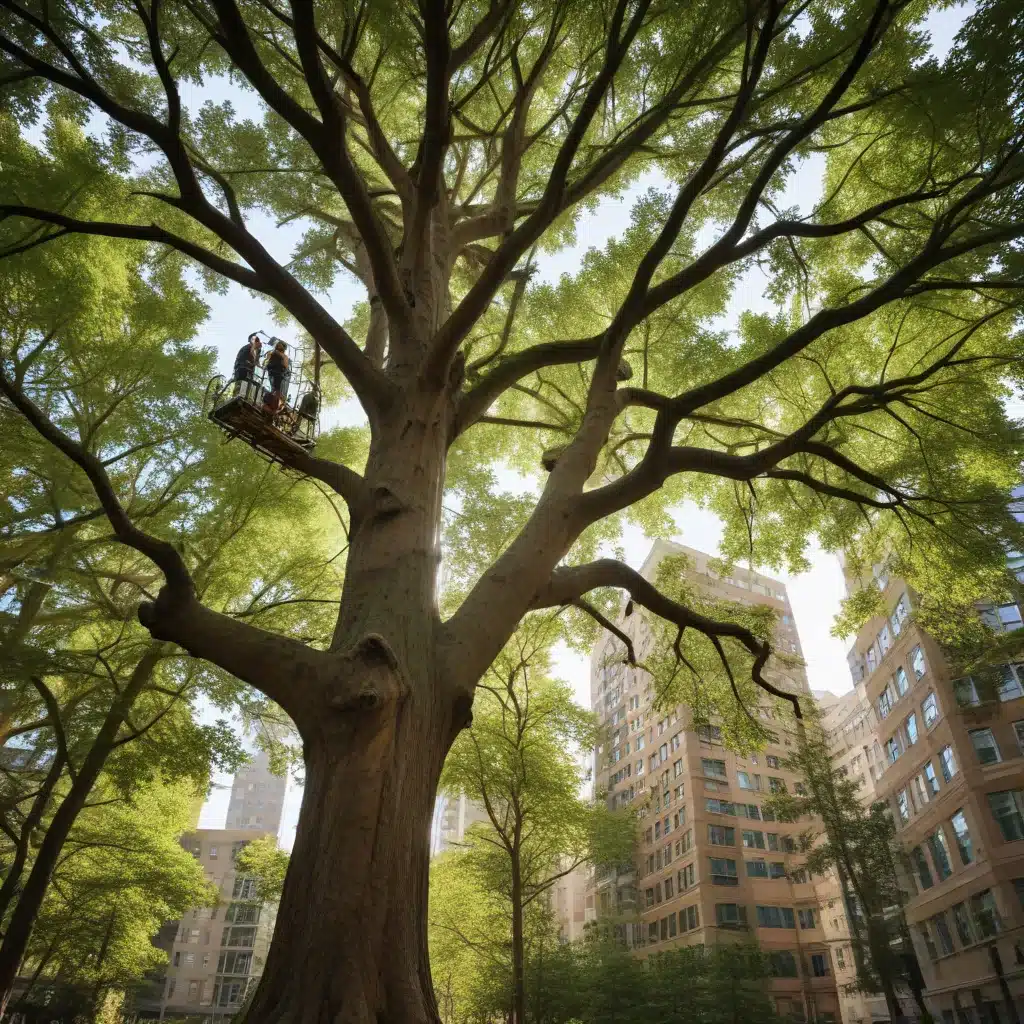
As cities continue to grow and evolve, the preservation and management of urban forests has become an increasingly complex challenge. Urban forestry, the specialized practice of cultivating and maintaining trees in urban environments, plays a critical role in addressing the multifaceted drivers shaping the future of our cities.
Drivers of Urban Forestry
Population Growth and Urbanization
Rapid population growth and the trend of urbanization have placed immense pressure on urban landscapes, often leading to the removal of established trees to accommodate new development. This conflict between the built environment and the natural world has sparked a growing debate on the role of trees in the modern city.
Climate Change and Environmental Sustainability
The urgency of addressing climate change has elevated the importance of urban forests as carbon sinks, urban heat island mitigators, and providers of crucial ecosystem services. Balancing the preservation of mature trees with the need for strategic tree planting and management has become a key priority for urban forestry practitioners.
Public Health and Wellbeing
Numerous studies have demonstrated the significant benefits of urban trees in promoting physical and mental health, improving air quality, and providing recreational spaces. As cities strive to enhance the quality of life for their residents, the preservation and expansion of the urban forest has become a vital component of urban planning and design.
Tree Preservation Strategies
Tree Canopy Assessments
Comprehensive tree canopy assessments are the foundation of effective urban forestry programs. These detailed surveys of the existing tree cover, species composition, and condition provide the necessary data to develop targeted preservation and management strategies.
Urban Tree Ordinances
Many municipalities have implemented urban tree ordinances to protect significant or heritage trees, regulate tree removal, and mandate tree planting requirements for new development. These policies aim to strike a balance between the needs of the built environment and the preservation of the urban forest.
Community Engagement Programs
Successful urban forestry initiatives often rely on active community engagement, empowering residents to become stewards of the urban forest. Outreach, education, and collaborative decision-making can foster a sense of ownership and responsibility for the local tree canopy.
Tree Removal Considerations
Infrastructure Conflicts
The presence of mature trees can often conflict with the installation and maintenance of critical infrastructure, such as roads, utilities, and buildings. Careful planning and innovative design solutions are necessary to mitigate these conflicts and preserve valuable trees wherever possible.
Invasive Species and Pests
The introduction and proliferation of invasive species and tree pests can pose a significant threat to the health and longevity of the urban forest. Proactive monitoring, early detection, and targeted management strategies are essential to maintain the resilience of urban tree populations.
Safety and Risk Management
The preservation of trees must be balanced with the need to address public safety concerns, such as the risk of tree failure, falling branches, or obstructed sight lines. Comprehensive risk assessment and targeted tree maintenance practices are crucial to ensuring the well-being of urban residents.
Balancing Preservation and Removal
Prioritization Frameworks
Developing robust prioritization frameworks for tree preservation and removal decisions is crucial. These frameworks should consider factors such as ecosystem services, cultural significance, risk management, and development needs to guide decision-making in a transparent and equitable manner.
Mitigation and Replacement Policies
When tree removal is necessary, mitigation and replacement policies can help offset the loss of urban canopy. These policies may involve requirements for on-site tree planting, off-site tree planting, or financial contributions to support urban forestry initiatives.
Innovative Urban Forestry Practices
Emerging practices, such as urban forest management plans, tree banking, and community-based stewardship programs, offer innovative approaches to balance the preservation and removal of urban trees. These strategies promote long-term sustainability, community engagement, and the strategic expansion of the urban forest.
Urban Forest Benefits
Ecosystem Services
Urban trees provide a wealth of ecosystem services, including air purification, stormwater management, carbon sequestration, and the regulation of local microclimate. Quantifying and communicating these benefits can help justify the investment in urban forestry programs.
Economic Impacts
The preservation and expansion of the urban forest can have significant economic impacts, including increased property values, reduced energy costs, and the attraction of businesses and residents to walkable, tree-lined neighborhoods. These tangible benefits support the case for comprehensive urban forestry initiatives.
Social and Cultural Values
Beyond their ecological and economic contributions, urban trees hold deep social and cultural significance. They can serve as landmarks, provide recreational spaces, and foster a sense of community identity. Preserving these cultural and historical assets is crucial for the well-being of urban residents.
Emerging Trends in Urban Forestry
Urban Forest Management Technologies
Advancements in remote sensing, GIS mapping, and data analytics are revolutionizing urban forestry practices. These technologies enable more precise inventory, monitoring, and decision-making to support the long-term sustainability of the urban forest.
Nature-based Solutions
The concept of nature-based solutions, which harnesses the power of natural ecosystems to address societal challenges, is gaining traction in urban forestry. Integrating urban trees and green infrastructure into comprehensive climate adaptation and resilience strategies is crucial for the future of cities.
Adaptive and Resilient Urban Forests
As cities face the impacts of climate change, the development of adaptive and resilient urban forests is paramount. This involves selecting drought-tolerant, pest-resistant tree species, implementing diversified planting strategies, and promoting continuous forest monitoring and maintenance.
The future of urban forestry lies in the careful balance between preserving the invaluable assets of the urban tree canopy and accommodating the evolving needs of the built environment. By embracing innovative practices, leveraging emerging technologies, and fostering community engagement, urban forestry professionals can shape cities that are not only livable, but truly thrive in harmony with their natural surroundings. For more insights on urban forestry and tree care solutions, visit TriCounty Tree Care.


